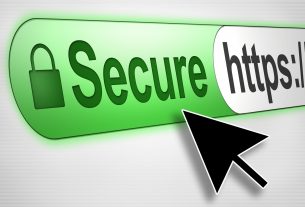Domain security is not just a check mark on your wish list, it’s a must-have for any website owner.
It’s easy to get immersed in the details of building your brand. Launching your website and managing your fledgling business is way more fun that worrying about security.
While all of that is fun, the importance of domain security can’t be stressed enough.
Hacking incidents had a slight decline in the last decade but have come roaring back as hackers get more and more sophisticated in their methods.
Believe it or not, hacked domains account for .8 of the world’s GDP – a staggering average of $400 billion in revenue loss!
Don’t know what it is? Know what it is but think you’re safe enough?
Follow along while we break down the what, why, and how of locking down your site.
What Is Domain Security?
First, let’s analyze where you’re weakest. Hackers look for spots where you’re most vulnerable and move in for the kill.
You might be stunned by how easy it is to register a domain, but that’s the flaw.
If you’re just logging in with an email and a password (that you swear is secure), there’s the problem.
A true domain security protocol is one that gives you control over things like password strength, access, and total lockout.
So now you know what it is and why you need it, let’s go over how to lock it down and keep your domain safe.
Create A Strong Password
This is really domain security 101. If you think your beloved pet’s name with a few numbers thrown in is all it takes to keep the bad guys out, think again.
Go with a password generator for the strongest security. It might be a confusing jumble of letters and numbers, but that’s exactly what you want.
Be Smart About Managing Your Passwords
Now that you’ve got one strong password, make one for every single account you have.
That way even if one gets cracked, you’ll still have control of the others.
Make keeping track your passwords easier on yourself by using a password manager.
Bonus tip: change your passwords every three months to really up your domain security.
Double Up
Make life difficult for hackers by adding a bonus level of security: turn on two-factor authentication.
That means that even with a password, a special code is sent to your phone. Hackers would need access to both to break in.
Tons of services have this capability because they realize how crucial it is to keep your site safe.
Register To Your Own Account
Use your own identity when registering your domain. That way you always retain control and your ID can be verified.
While it seems daunting, you don’t have to give up control of your main account.
There are ways to share access to the site without using your main login.
Lock Up Your Email
So you’ve turned on two-factor authentication on your website and registered everything in your own account.
It might seem like a water-tight plan but go the extra mile and make sure your email is protected, too.
If someone gets ahold of your email, they might be able to reset your password through there.
In addition to the previous steps, safeguarding your email is a big step towards domain security best practices.
Get A Good Anti-Virus
Believe it or not, you don’t have to shell out big bucks for an anti-virus that does the trick.
There are plenty out there that come directly from Microsoft or other reputable places that offer no to low-cost anti-viral programs.
To make sure it’s effective, always keep it up to date. Any time there’s an update, make sure to get it done immediately.
Try to run your anti-virus scan once a week at least.
Be Careful What You Click On
In the middle of the hustle and bustle of building your business from the ground up, you might just click any old thing that comes along.
Stop before you click.
Don’t go for any links or downloads that look tempting before running it through your antivirus software.
Check out a website that a link is trying to re-direct you to verify it’s safe to go.
And be especially wary of any site that asks you to register with an email and a password.
Bonus: stay safe while using public wifi. Hackers can use it to re-direct sensitive information if your access it from a phone or tablet.
Phishing is No Fun
Heard of Phishing? Sounds like when you join the legendary 90s jam band on their cross-country tour but it’s nowhere near as cool.
Phishing is when hackers try to get you to let your guard down through malicious emails. Those hackers are getting sneakier by the day, too.
Here are some things to watch out for if you suspect you’re being phished:
- Using a legitimate business’ name – but a fake website
- Very personal emails with your name – but asking you to click on a link or download something. This type is common on social media.
- Media access sites – but something’s off. Very commonly, phishing attacks will come from something you use to access your files, like a fake Dropbox account.
Be wary of what’s in your inbox to maintain domain security.
Make A Real Plan
If you’re part of a larger company, make domain security a party of your overall strategy.
Your domain is just as valuable an asset – and full of rich information that you don’t want getting into the wrong hands.
Make sure your company understands how crucial it is that your website’s integrity is never compromised. Work with them to put protocols in place in case something happens.
Get Real-Time Updates
While you can put all of these things into place, sometimes hackers still slip through.
Sleep easy by hiring a site monitoring service, like Site Uptime. If there’s a drop in activity or anything else suspicious, they’ll instantly alert you.
Plus, there are several tiers of plans, one of which is completely free.
Which tips have you tried? Which do you need to follow up on? Don’t compromise your website – take domain security seriously and don’t skip any steps.




